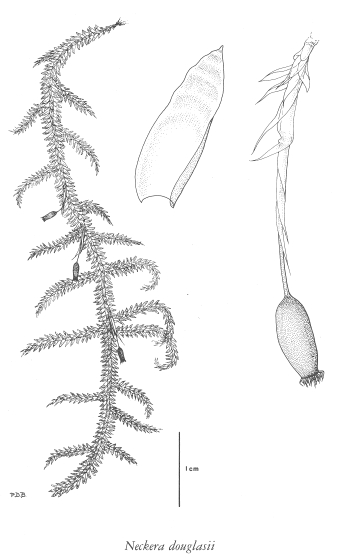E-Flora BC: Electronic Atlas of the Flora of British Columbia
Neckera douglasii Hook.
Douglas' neckera Neckeraceae Species Account Author: Wilf Schofield Extracted from Some Common Mosses of British Columbia Introduction to the Bryophytes of BC
|
|||||||||||||
